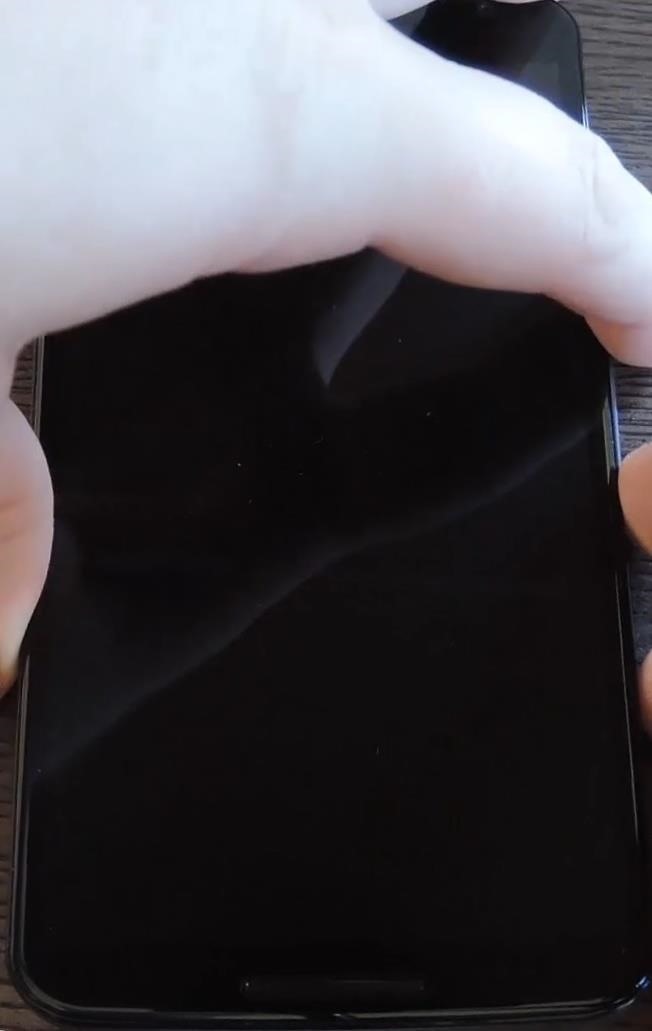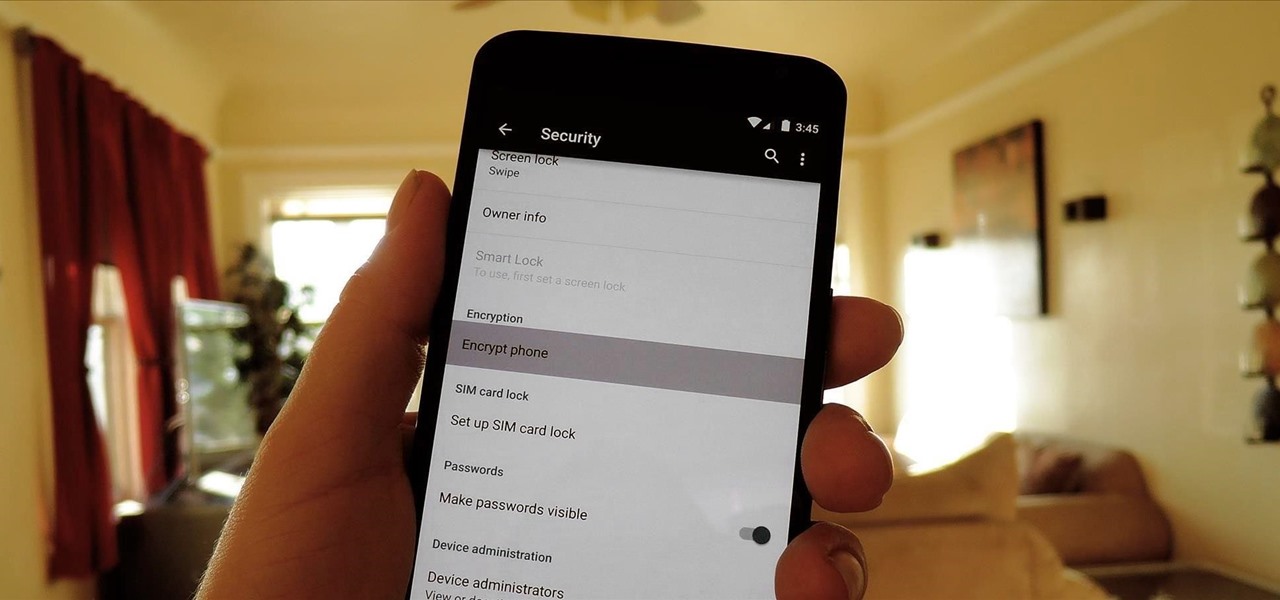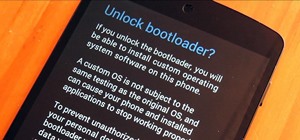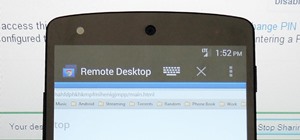One of the more talked-about features of Google's new flagship device is the fact that all of the data on the Nexus 6 is encrypted by default. At face value, this certainly seems like an added bonus for the 6-inch phablet, especially in this day and age with growing security concerns abound. It's definitely something that the FBI is none too pleased about.
But the encryption methods used in the Nexus 6 are not without their faults. Rather than using a dedicated hardware chip to perform the functions necessary for maintaining encryption, Google opted to use a software layer that handles all of the strenuous legwork. This results in decreased performance and battery life over what the device is capable of, most notably read and write speeds that are almost 3 times slower than they would be without encryption.
Since there's no option in the settings for disabling encryption on the Nexus 6, developer Brandon Berhent created a modified boot.img file that will disable encryption automatically. The process is relatively simple, but decrypting the Nexus 6 means that any existing data will need to be wiped. So make sure you have everything important backed up before proceeding.
Requirements
- Nexus 6 (this mod is not intended for use on any other device)
- Windows PC
Step 1: Put Your Phone into Bootloader Mode
First up, power your Nexus 6 completely off. When the screen goes black, press and hold the Volume Down button with one finger, then press and hold the Power button with another. This will bring up Android's Bootloader menu.


From here, go ahead and connect your phone to your PC using a good quality USB cable.
Step 2: Download Necessary Files
For this method, you'll need to download two image files and the Nexus Root Toolkit. From your Windows PC, click the following links to get each of the image files:
With those downloaded, grab the Nexus Root Toolkit installer file from this link.
Step 3: Set Up the Nexus Root Toolkit
First, go ahead and launch the Nexus Root Toolkit installer file that you just downloaded. Follow the prompts for installation, then NRT will ask what device you have and what Android version it's currently running. For device, go with Nexus 6, obviously. Then, select "Android 5.0.0 - Build: LRX210" as the Android version and click "Apply."

Next, NRT will ask to download some additional files. Go ahead and click "Download + Update All File Dependencies."

After that, you should be taken directly to the Nexus Root Toolkit's main menu. To begin, click the button labeled "Full Driver Installation Guide."

From here, skip ahead to Step #3, then click the "Google Drivers" button.

Follow the prompts to get all of your ADB and Fastboot drivers installed, then exit the Driver Configuration Guide.
Step 4: Unlock Your Bootloader
Before you can flash the modified boot.img file that automatically decrypts your phone, you'll have to unlock your bootloader. From NRT's main menu, click the "Unlock" button in the middle of the screen.

From here, click "OK" on the first popup. The second popup will ask if you're currently booted into Android—since your phone is in bootloader mode, be sure to click "No" on this dialog box.

A message will pop up on your phone at this point asking if you'd like to unlock your bootloader. Make sure that "Yes" is selected, then press your phone's Power button to confirm your choice.

After that, wait a few minutes for the process to complete. Your phone will boot back into Android automatically when it's finished, but don't bother going through the initial setup process just yet. Instead, put your phone into bootloader mode again by powering it off, then holding the Volume Down and Power buttons simultaneously.
Step 5: Flash the Modified boot.img File
With your phone back in bootloader mode and the USB cable still connected, it's time to flash the modified boot.img file that automatically disables encryption. From the Nexus Root Toolkit's main menu, click the "Launch" button under the Advanced Utilities header.

From here, make sure that "Flash (Permanent)" is selected at the top of the middle column. With that done, click the "Boot" button, then press "OK" on the popup.

Use the next screen to navigate to your PC's Downloads folder, then select the "boot_noforceencrypt.img" file and click "Open."

The Nexus Root Toolkit will automatically flash the modified boot.img file at this point, and after a few minutes, your phone should boot back up. You'll likely encounter a screen on the phone asking you to enter a password, but ignore that and simply put your phone back into bootloader mode by powering it off, then pressing and holding the Volume Down and Power buttons simultaneously.
Step 6: Flash the Stock "userdata.img" File to Factory Reset
With your Nexus 6 still connected to the PC and back in bootloader mode, click the "Userdata" button in the Nexus Root Toolkit's Advanced Utilities menu, then hit "OK."

From here, select the userdata.img file that you downloaded earlier, then click "Open."

This will wipe all of the old encrypted data from your device, paving the way for you to start fresh without encryption. After a few minutes, your phone will boot back into Android, at which point it is safe to disconnect the USB cable.
You'll have to run through initial setup again, but now your shiny new Nexus 6 should have a bit more oomph to it. Has the performance or battery life on your phone shown a noticeable improvement since you've disabled encryption? Let us know in the comment section below, or drop us a line on our Facebook and Twitter feeds.
Just updated your iPhone? You'll find new emoji, enhanced security, podcast transcripts, Apple Cash virtual numbers, and other useful features. There are even new additions hidden within Safari. Find out what's new and changed on your iPhone with the iOS 17.4 update.
























15 Comments
Thanks, very much for this tutorial work 100%
Please note, with latest update 1.9.9 if you select boot there is an option to install boot noforceencryptimage and userdata. makes it really easy.
Sweet, that makes it super easy!
Does it automatically flash the noforceencryptimage AND the userdata or do I have to flash the bootimage first and then the userdata manually?
I just tried it, and it doesn't flash the userdata image afterwards or do a factory reset for you. So you'd have to do it manually, but at least it's still a bit easier than it was.
Hello, I don't have a Nexus 6 yet but I will get it in the following month. But I have a question. After doing all those steps, if there's an Android update, will I be able to update immediately OTA without losing my disabled FDE or does it work as a custom ROM? Thanks for your help.
More than likely, the OTA will recognize that your boot image is different than stock, so it will abort the process. But even if it installs, the forced encryption would come right back. On the bright side, though, I'm currently working on a tutorial on how to get around those issues, and it uses most of the same stuff from this tutorial, so it shouldn't be any more difficult than this was. Hopefully I'll have it out within the next day or two.
I am using the Toolkit v 1.9.9 and the option to Boot does this all for you it seems now. Am I wrong? Screenshot included.
The problem I am running into now is that after unlocking the device, the Toolkit will no longer detect it as an ADB device. I tried turning on USB Debugging, starting from bootloader, changing USB ports (even though it unlocked from this same port), all the drivers are current...I am at a lost what left to try.
Update:
I ended up having to install the files manually after all, I could not get the Toolkit to recognize the device using the built in encryption method.
NRT got an update a few weeks ago that did away with the "Flash - Permanent" option. But that's no biggie, the "Fastboot Flash" column in the "Advanced Utilities" menu actually flashes things permanently now by default.
As far as the USB debugging issue goes, I've had that happen myself once or twice. What fixed it for me was going into the phone's settings, then "Storage", then tapping the 3-dot menu button and selecting "USB Computer Connection". From there, changing the connection mode to "PTP" rather than "MTP" got USB debugging mode working again.
I personally prefer the manual method, so I'm glad you were able to get it done that way. I covered this method because it's a bit easier...well, in theory at least. Glad you got everything squared away, though, but let me know if you come across anything else you could use help with.
I am wondering what the userdata.img is used for!?
Also when you unlock OTA is disabled.
The userdata image is used to overwrite your existing encrypted user data. You could do the same thing with a factory reset after you install the modified boot image, but this makes it a bit easier.
I always update my Nexus devices manually, but from what I've read, unlocking doesn't prevent you from getting OTA updates. The modified boot.img, on the other hand, will cause the stock update script to abort.
How can I flash the stock boot.img file that forces encryption?
Great tool, but this didn't work for me at all. Followed instructions to the letter as I know how important it is not to have this happen. Phone now keeps going in a boot loop. In the process of downloading stock Lollipop to get the phone back to a working state. Don't think I will try this again. Unless you can shed some light on how I reap the rewards of this method, going back to how my phone was before.
This could be a result of a new setting in Android Lollipop. If you're up for trying it again, add this step before you begin: On your phone, head to Settings, then "About Phone," then tap the "Build Number" entry 7 times in rapid succession. This will enable a hidden menu on your phone, so back out to the main settings menu again, then head to "Developer Options." From here, find "Allow OEM Unlock," then make sure this setting is enabled and try running through this tutorial again.
Share Your Thoughts